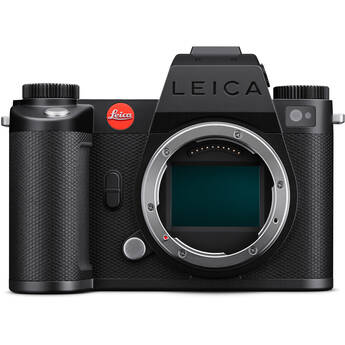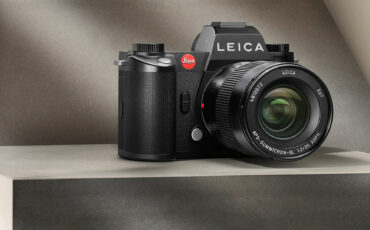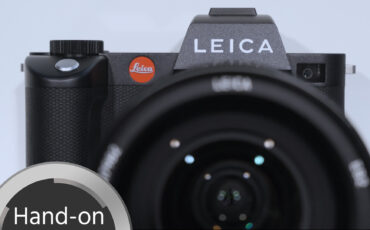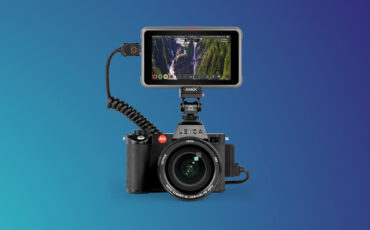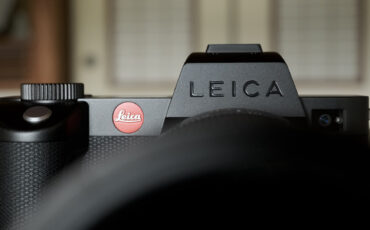
Leica has just released their latest full-frame L-Mount mirrorless camera: the SL3-S. This video-centric camera features a new 3:2 24MP BSI image sensor with better low-light performance and in-body image stabilization. You can record internally at up to 6K at 30P (4:2:0) but also in 5.8K30P in ProRes 422HQ, and the full-size HDMI port allows for HDMI-RAW external video recording. So, let’s take a closer look at it!
Before we get started, don’t forget to also check out my colleague Johnnie’s first look review here.
German high-end camera manufacturer Leica is well-known amongst photographers for their premium lineup of stills cameras. The Leica SL3 was released last year and is the company’s latest digital mirrorless camera. The least we can say is that the SL3 has stellar features, including a 60MP full-frame image sensor, 8K and ProRes internal recording capabilities, a dedicated video mode, and so on.
However, nearly four years after the release of the SL2-S, the S-line being Leica’s video-centric lineup of mirrorless cameras, the German manufacturer is finally back with its successor: the SL3-S.
Leica SL3-S – features
Like its predecessor, the Leica SL3-S features a new full-frame 24.6MP 3:2 BSI CMOS image sensor. Please note that 48- and 96-megapixel multishot modes are available for still shooters if you need extra resolution. While this decrease in resolution can seem counterproductive compared to the SL3 and its massive 60MP image sensor, the smaller sensor allows the SL3-S to have better low-light performance.

The SL3-S shares a lot of things with the SL3, including:
- The SL3 and SL3-S are L-Mount cameras, compatible with all Leica and L-Mount alliance partners’ lenses.
- Both cameras feature a Maestro IV image processor.
- ISO range of 50 to 200,000.
- The size is identical between both cameras: 15.1 x 10.8 x 8.4cm/5.96 x 4.25 x 3.3″, made of aluminum and magnesium alloy. However, the SL3-S is lighter at 768g/1.7 lbs, as opposed to 769g/1.7 lbs for the SL3.
- You can shoot in all weather conditions with both cameras thanks to an IP-54 rating and from temperatures ranging from -10 to +40°C/14 to 104°F.
- The SL3-S has In Body Image Stabilization (IBIS), which is handy for filmmakers.

- A 3.2-inch high-res touchscreen and EyeRes 5.76m-dot 0.78x OLED EVF.
- On the right side of the camera, two memory card slots: one CFexpress Type B and one SD UHS-II.
- Powered by the Leica BP-SCL6 battery.
You got it – the SL3 and SL3-S have a lot in common.

Connectivity
You’ll find one USB Type-C port on the left side of the Leica SL3-S for data transmission, tethering, and power supply. The SL3-S is also a certified Apple “Made for iPhone and iPad” accessory, so you can connect it directly via USB-C to your Apple device. Lastly, you can capture footage directly to an SSD drive connected to the USB-C port, which can be very handy if you record in ProRes 422HQ (more on that below).

The camera features one 3.5mm microphone input and one 3.5mm headphone output. It also has a full-size HDMI 2.1 port, which allows for external monitoring and video recording.
Similarly to the SL3, the SL3-S features built-in Bluetooth and WiFi connectivity. You can connect the camera to the free Leica FOTOS app to download/edit your pictures and update the camera’s firmware wirelessly. Furthermore, Leica mentions that “over the course of 2025, the (SL3-S) Camera-to-Cloud function will become available via Adobe frame.io, using which videos and photos can be uploaded directly from the camera to the Adobe frame.io cloud for further processing.”

Leica SL3-S autofocus and video recording modes
Leica claims that the SL3-S uses their latest high-speed autofocus system, which combines three technologies: Advanced PDAF, contrast detection, and object detection.
Regarding picture profiles, you can choose between multiple flavors, including Rec.709, L-Log Rec. 2020, and HLG Rec. 2020. The most significant difference between the SL3 and the SL3-S is that the latter features an extra L-Log picture profile.
Now, let’s jump to what makes the real difference between the SL3 and SL3-S: the video recording modes and options. The SL3-S can record internally in 6K 3:2 (5952×3968), C6K, and 6K 16:9 at up to 30P in 4:2:0 10-bit, with a maximum bitrate of 200Mbps. If you drop down the resolution to 4K, it can capture footage at up to 60P in 4:2:2 10-bit with a 1.45x (APS-C) crop. To shoot in 4K/C4K without a crop, you have to lower your framerate to a maximum of 30P.
The Leica SL3-S can capture C6K (5776×3056) footage in ProRes 422HQ at up to 30P for better results and faster turnarounds. With a bitrate of around 1939Mbps, you better have a lot of CFexpress memory cards available or, ideally, record directly to an SSD external drive, but that’s doable. If you drop down the resolution to C4K, you can still capture footage in ProRes 422HQ at up to 60P. The full-size HDMI port allows for HDMI RAW external recording at up to 6K30P.

Lastly, Leica also worked on their menu and UI, inherited from the original SL3. According to the company, “As with the SL3, the optimizations to the SL3-S include ergonomic and haptic features, as well as the user interface and menu navigation. The clearly structured icon and menu design make navigation even easier, with distinct sections for photo and video functions. The Cine mode has been tailored specifically to the needs of professional video production.”

Price and availability
The Leica SL3-S is available now for €5,190.00.
For more information, please visit Leica’s website here.
What do you think about the SL3-S? Have you already shot on a Leica mirrorless camera? Which one would you choose between the SL3 and SL3-S? Don’t hesitate to let us know in the comments down below!




